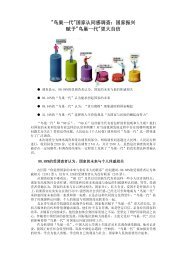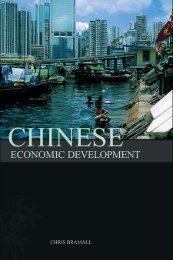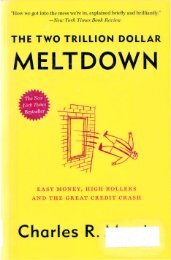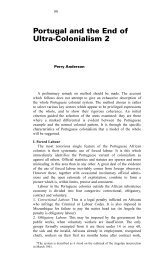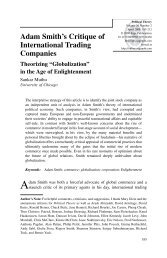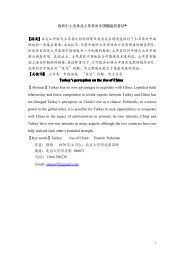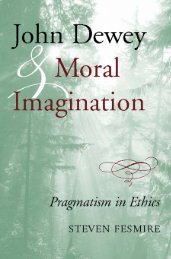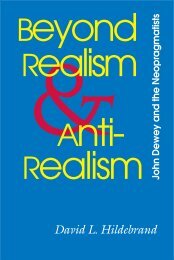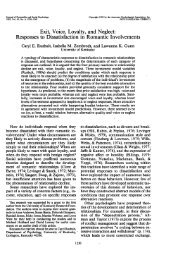Battle for China's Past : Mao and the Cultural Revolution
Battle for China's Past : Mao and the Cultural Revolution
Battle for China's Past : Mao and the Cultural Revolution
Create successful ePaper yourself
Turn your PDF publications into a flip-book with our unique Google optimized e-Paper software.
CHALLENGING THE HEGEMONY II<br />
all of history occurred, Jiang Chuangang (2006) lists how famines<br />
occurred frequently in <strong>the</strong> first half of <strong>the</strong> twentieth century in China,<br />
citing <strong>the</strong> famines from 1928 to 1930 in Gansu <strong>and</strong> Shaanxi when more<br />
than 10 million are claimed to have died of starvation, or <strong>the</strong> 1936–37<br />
famine in Sichuan when cannibalism is claimed to have taken place, or<br />
<strong>the</strong> 1942 famine that plagued central China <strong>and</strong> in which Henan’s<br />
population is claimed to have halved. Jiang also pointed out that,<br />
according to statistics compiled by <strong>the</strong> In<strong>for</strong>mation Service of <strong>the</strong><br />
Research Centre of China’s Population <strong>and</strong> Development, <strong>the</strong><br />
population of 1958, 1959, 1960 <strong>and</strong> 1961 was respectively 653,460,000,<br />
660,120,000, 662,070,000 <strong>and</strong> 664,570,000, with an increase of 11,100,000<br />
people in three years. Though <strong>the</strong> population increases of <strong>the</strong>se years<br />
were lower than those during <strong>the</strong> years of 1956 to 1958, <strong>the</strong> increase<br />
was still on average 5.46 per cent, higher than <strong>the</strong> world average at that<br />
time, <strong>and</strong> much higher than pre-1949 years. Jiang fur<strong>the</strong>r points out<br />
that <strong>the</strong> death rate of 1959, 1960 <strong>and</strong> 1961 was 1.459 per cent, 1.791 per<br />
cent <strong>and</strong> 1.424 per cent, an average of 1.558 per cent, which was about<br />
<strong>the</strong> same as <strong>the</strong> world average death rate at that time, <strong>and</strong> much lower<br />
than <strong>the</strong> death rates in pre-1949 years. During <strong>the</strong> three years of famine<br />
30,952,300 people died, <strong>and</strong> compared with <strong>the</strong> lower death rate of<br />
11.40 per cent during 1956 to 1958, <strong>the</strong>re were an extra 8.3 million<br />
deaths, not as many as <strong>the</strong> 30 to 40 million claimed by anti-communist<br />
literature such as Chang <strong>and</strong> Halliday (2005). 3<br />
Li Xuanyuan is a heavyweight e-media participant in challenging<br />
<strong>the</strong> anti-<strong>Mao</strong>ist truth. Here is a brief case study of Liao Bokang by Li<br />
that shows how anti-<strong>Mao</strong>ist truth is manufactured. Liao Bokang was<br />
promoted to important positions by <strong>the</strong> post-<strong>Mao</strong> authorities, serving<br />
as CCP party secretary of China’s largest city, Chongqing, <strong>and</strong><br />
Chairman of <strong>the</strong> Political Consultative Committee of Sichuan province.<br />
In 2004 Liao published an article in <strong>the</strong> Dangdai shi ziliao (Documentation<br />
of Contemporary History) compiled by <strong>the</strong> Academy of Social<br />
Sciences of Sichuan province. In that article Liao claims that in Sichuan<br />
alone <strong>the</strong> death toll was 10 million (remember this is <strong>the</strong> province<br />
where Jung Chang grew up, where her fa<strong>the</strong>r served as <strong>the</strong> deputy<br />
propag<strong>and</strong>a chief of <strong>the</strong> province <strong>and</strong> yet Chang does not or cannot<br />
provide any direct documentary evidence or witness account of <strong>the</strong><br />
famine death toll ei<strong>the</strong>r in Wild Swans or <strong>Mao</strong>: The Unknown Story). Liao<br />
fur<strong>the</strong>r claims that he was interviewed in 1962 by <strong>the</strong> <strong>the</strong>n Secretary of<br />
<strong>the</strong> Communist Youth League Hu Yaobang, as well as by <strong>the</strong> Director<br />
of <strong>the</strong> CCP Central Office Yang Shangkun, <strong>and</strong> reported <strong>the</strong> 10 million<br />
famine death toll in Sichuan to <strong>the</strong>m. When questioned by Yang about<br />
evidence of <strong>the</strong> figure of 10 million Liao said that <strong>the</strong> figure was from<br />
a Sichuan provincial document. Yang was surprised that he did not<br />
know of such a document since every provincial document had to pass<br />
[ 141 ]





